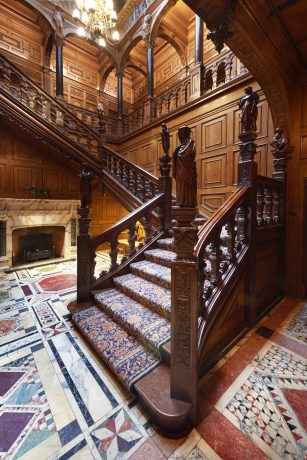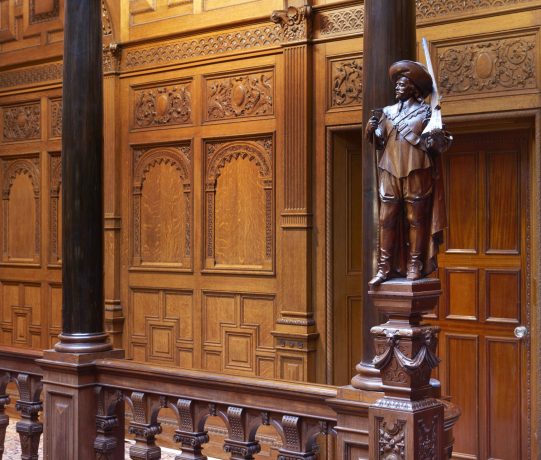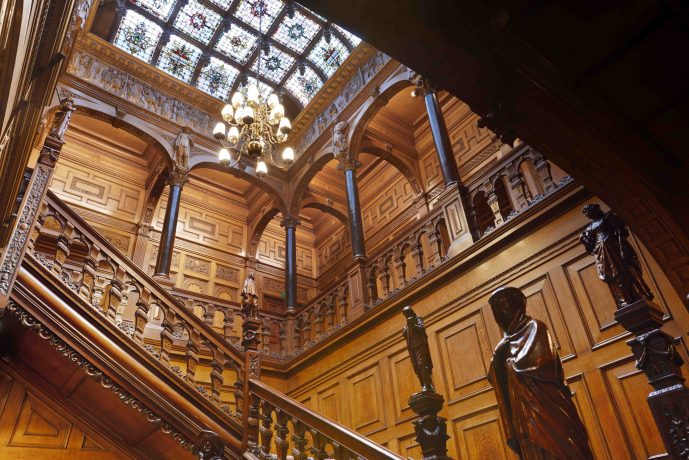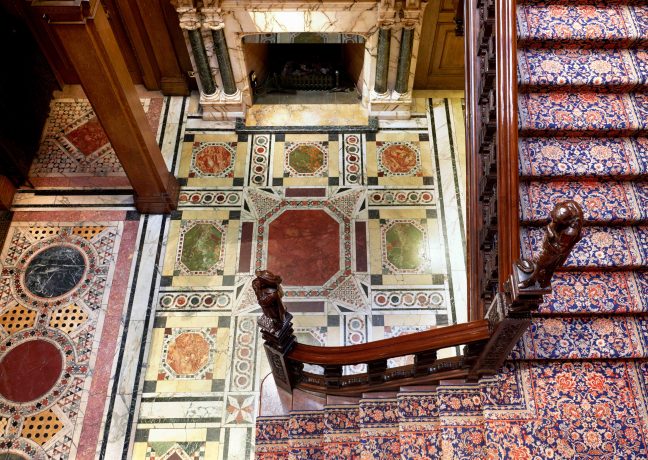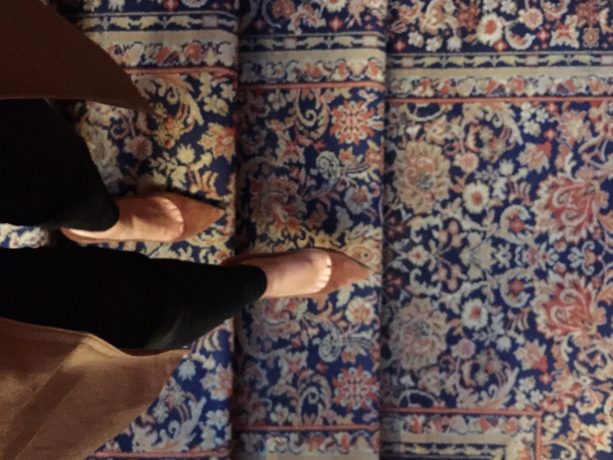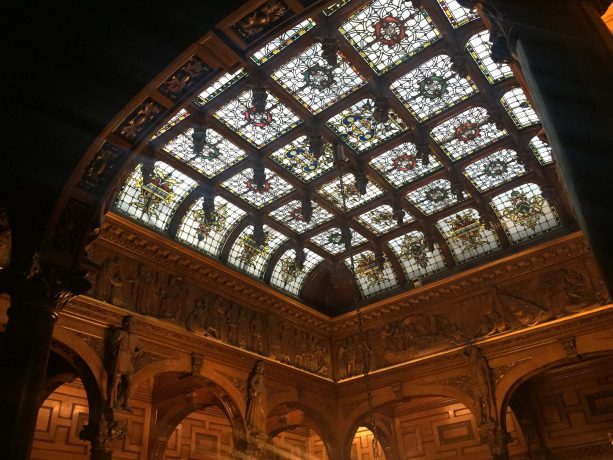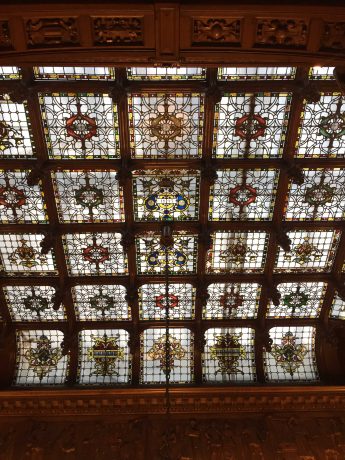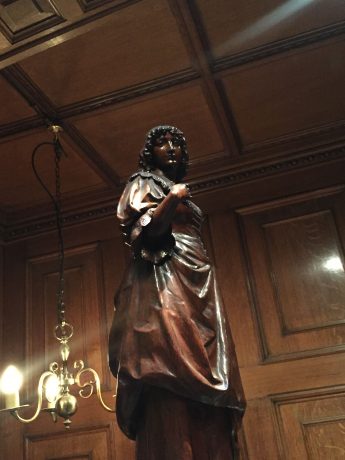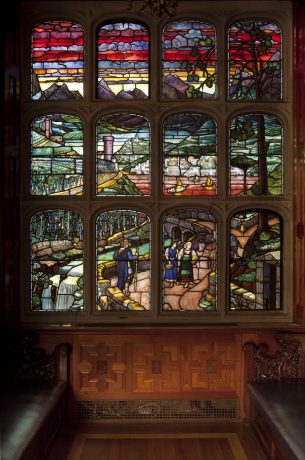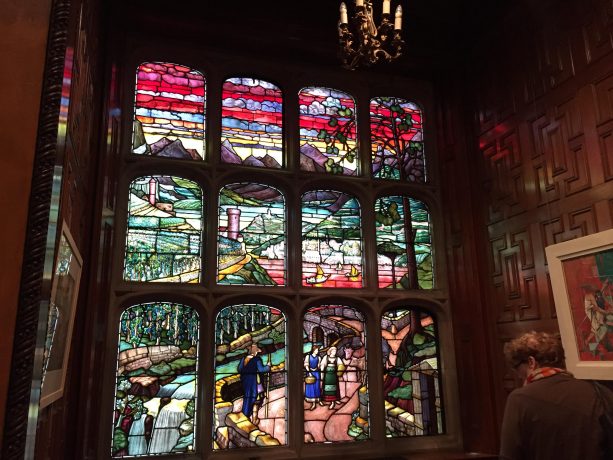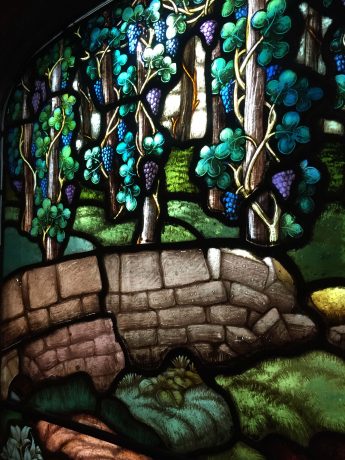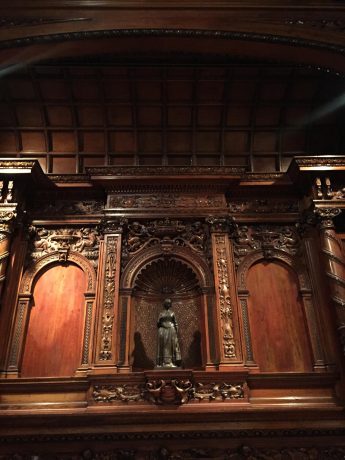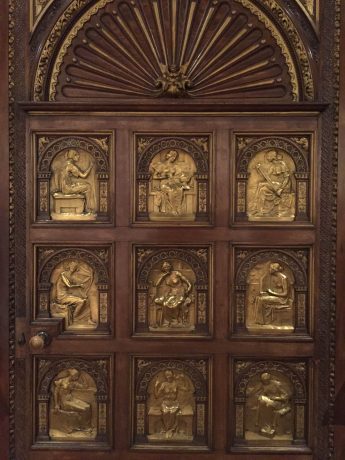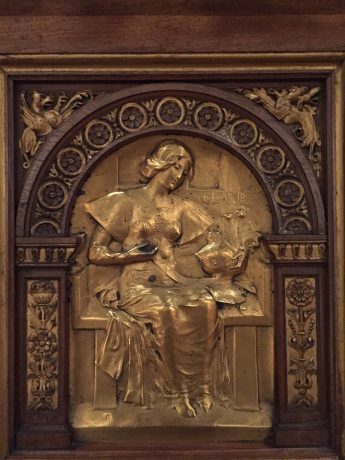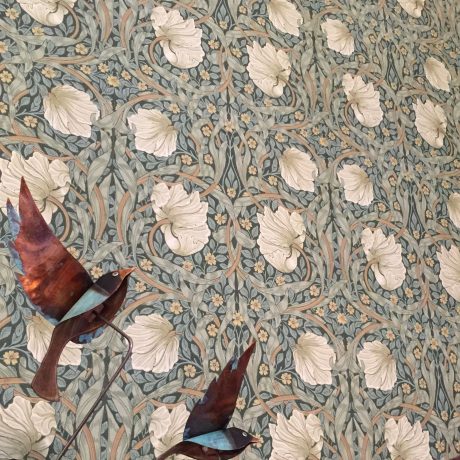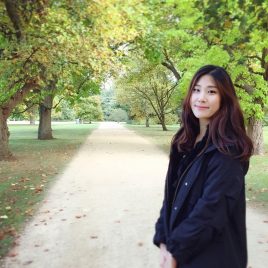Quietly fitting next to the riverside in London’s Embankment, Two Temple Place is a beautiful Neo-Gothic mansion built by architect John Loughborough Pearson for the use of Viscount William Waldorf Astor, a wealthy attorney and businessman from America. The mansion was to be used as his office and his home away from the States, as well as a place to keep his growing collection of artworks. Having started in 1892 and completed in 1895, Two Temple Place may be relatively compact in size, but it is evident that attention to detail of this early Elizabethan-style building was not spared, which makes this place a visual treat.
In a lot of these details all around the building are hidden meanings which reflect the personal tastes of the owner of the house, and they also give an insight to the fashion of the times it was built. Take the charming weather vane made by metal worker J. Starkie Gardner on the roof; shaped to represent the Santa Maria of Christopher Columbus, it stands to symbolize the connection between America and Europe. As you walk up the steps to get into the museum also notice the two lamp posts on either side with cherubs standing by them: one of them looks like it is speaking into a telephone, a quirky response to the era of technology in which they were made.
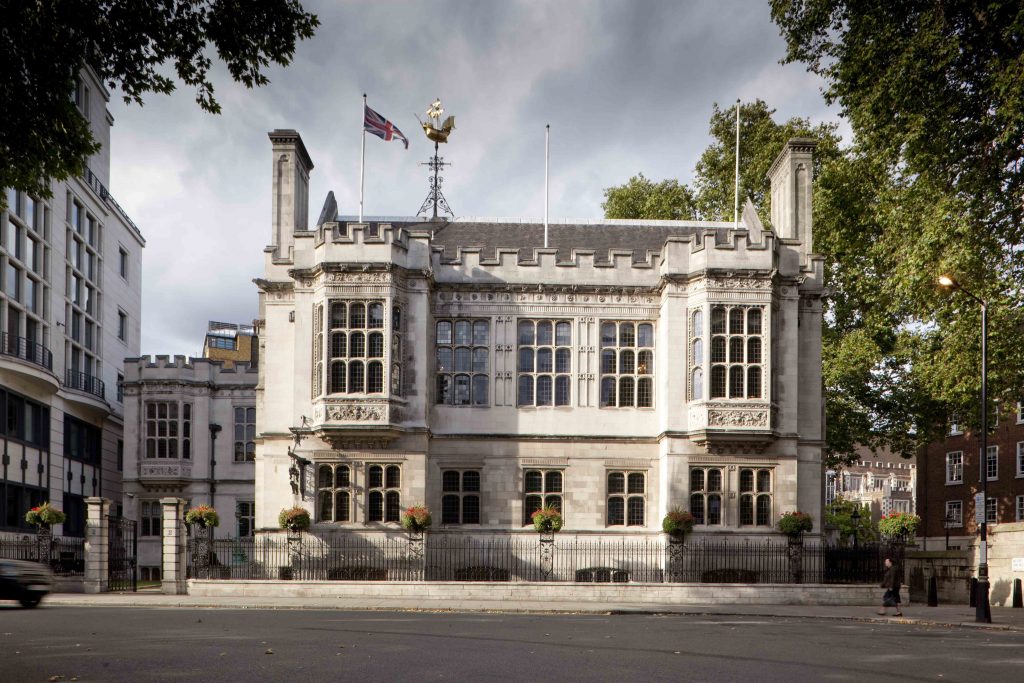
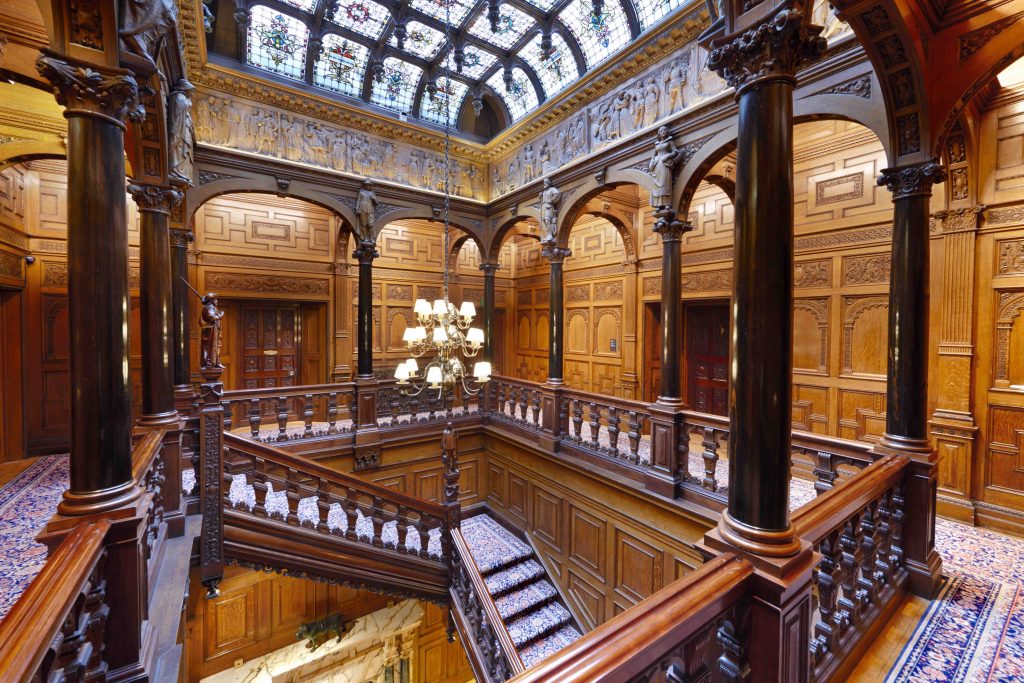
Two Temple Place is owned and run by Bulldog Trust, and is dedicated to promoting art collections from museums and galleries outside of London. Their annual exhibitions which run from January through to April are open to the public free of charge; this year’s exhibition Sussex Modernism: Retreat and Rebellion has been put together with 120 works over collections from nine museums and galleries across the region of Sussex, including the Jerwood Gallery and the Brighton Museum and art gallery. Highlights include the iconic Edward James/Salvador Dali Mae West Lips Sofa (1938) which sits on the ground floor by the main staircase.
In the midst of all the artworks, the main staircase will always manage to steal the show. From the marbled flooring, to the glossy oak and mahogany staircase, chandelier and the stained glass ceiling- you are met with a jaw-dropping spectacle. Throughout the museum there are mahogany sculptures everywhere by sculptor Thomas Nicholls, depicting characters from many different classical books. We can see more here adorning the staircase. These particular ones are said to have been inspired by characters from the Three Musketeers, Astor’s favorite novel. The whole thing looks like the dreamy interior of a fairy tale castle.
Finally, managing to go up and past the staircase, we find ourselves at the Great Room. Here you will find a number of things to spend time looking at; one of the doors is particularly gorgeous as it has silver gilded panels each designed by Sir George Frampton. The nine panels illustrate the nine heroines from Arthurian Legend. On opposite sides of the room are beautiful stained glass windows, creating rainbow colored reflections onto the wooden walls, adding a burst of color into this otherwise monochrome place. Designed by the best stained glass workshop in the late 19th century Clayton and Bell, it is refreshing to see stained glass from such close proximity; you would normally find them in churches and would only be able to see from a distance. Here you can get right up close to the glass and see through all the details.
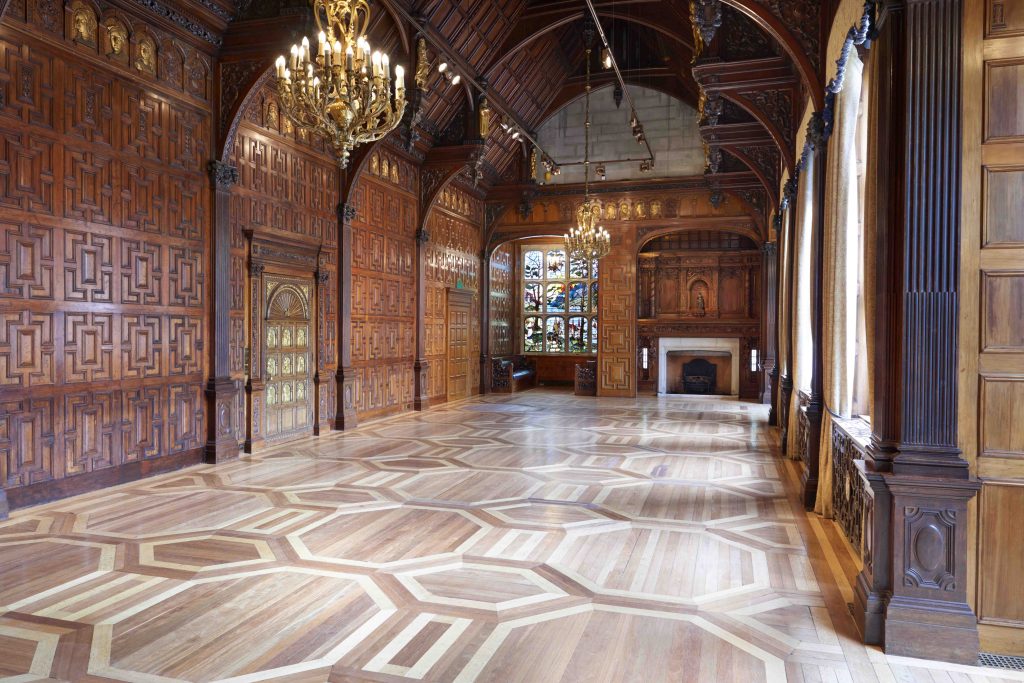
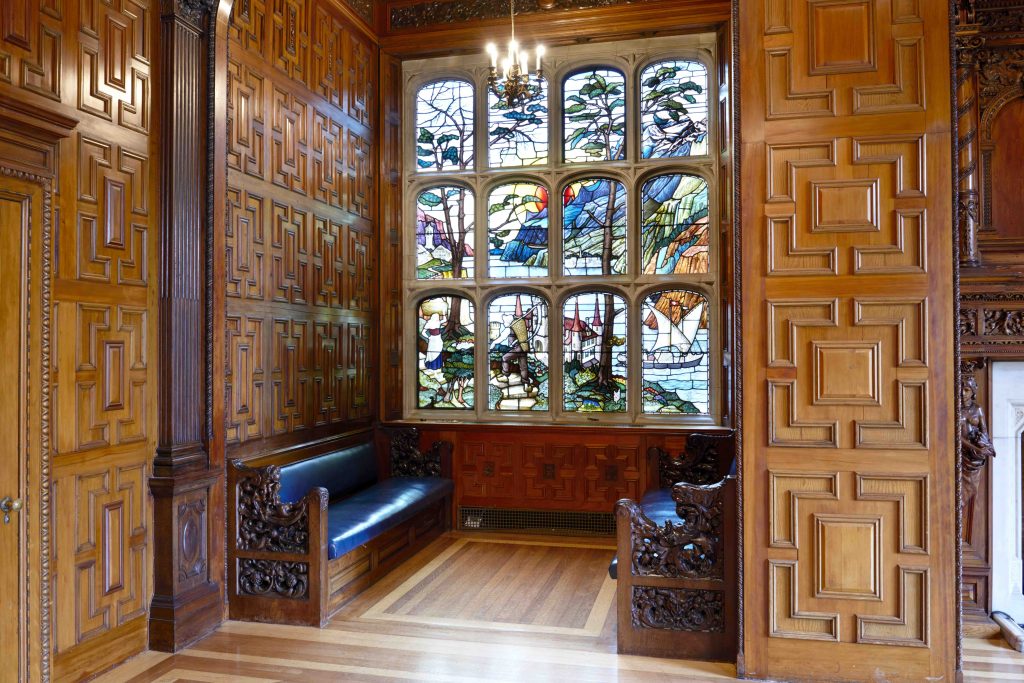
We can see that the many artists and designers who were commissioned to design the various parts of this museum were not only skilled in what they do, but also the best in their respective fields. Two Temple Place is a celebration of craftsmanship, and the museum really is a work of art in itself.It is a beautiful venue, and is also is available to book it out for special events, even for a wedding. You may even recognize the interiors from the wedding scene of Lady Rose in Downton Abbey!
The museum shop also deserves a good look around as well. In line with their exhibition, they are currently stocked up with unique gift ideas such as handmade cufflinks, hats, wine bottled up from Sussex, and jam also produced in Sussex. The museum also has an in-house café, a sweet and cozy place which is much more quiet and intimate than most others. The museum is open to the public to view until the 23rd of April. Please note that Wednesday is open for longer hours.

